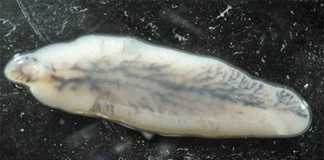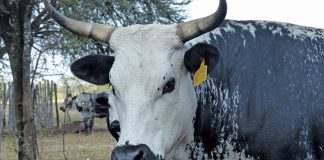Two types occur: Asiatic redwater and African redwater. Symptoms include a high temperature, loss of appetite, lethargy, weakness, diarrhoea, red-coloured urine and diabetes. The animal may die before symptoms can be observed. Asiatic redwater can include nervous symptoms such as hypersensitivity, circling movements, aggression, convulsions and paralysis. A pale or yellowish carcass, watery blood, an enlarged spleen, a large gallbladder filled with bile and red urine (and in the case of Asiatic redwater, a pink brain) can be observed postmortem.
As redwater can be confused with diseases such as gallsickness, leptospirosis or copper or carbon poisoning, diagnosis must be confirmed with a blood smear, or, for Asiatic redwater, a brain smear.
A live redwater inoculant is available for both types, but can be dangerous for older animals. Inoculate calves from between three and nine months. Watch inoculated animals closely for two to three weeks after inoculation, and treat them immediately if they become sick. Immunity takes four to six weeks to develop, so inoculate animals at least two months before moving them to a redwater area.
Source: DH de Lange (undated). ‘Redwater Information Sheet’, Elsenburg/George Veterinary Services, www.elsenburg.com
Jenny Turton (undated). ‘Important tick-borne diseases in ruminants’. Directorate Communication, National Department of Agriculture and ARC-Onderstepoort Veterinary Institute.













